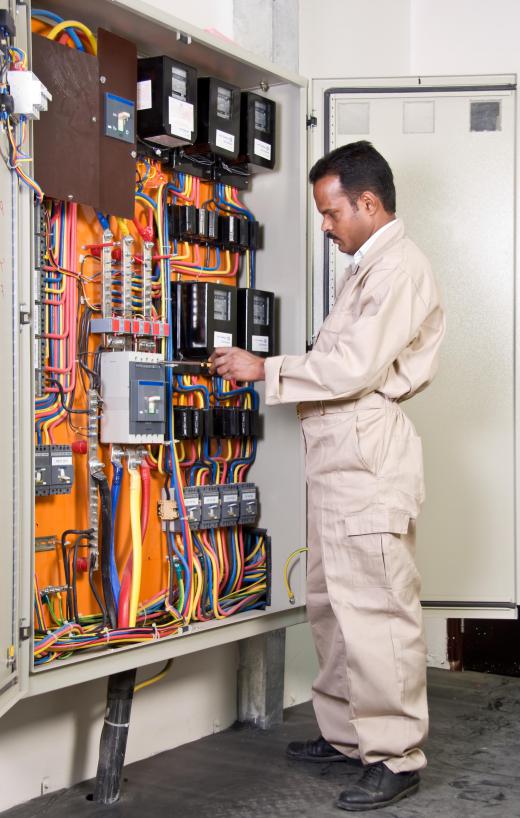Auxiliary contacts are secondary switching devices that work in conjunction with primary switching equipment such as circuit breakers, relays, and contactors. These contacts are physically linked to the main switching mechanism and activate at the same time it does. They are commonly used as interlocks or retainers on the primary device's control circuit and often used to give indication of its state of operation. Many contactors and circuit breakers feature sets of auxiliary contacts as integral parts or they may be modular snap on units which can be added or removed as required. They are available with either normally open or normally closed contact points or a combination of both.
Main circuit switching devices, such as circuit breakers and contactors, often require additional switching functions over and above those of their primary contacts. These include remote indication of their status, trip function indication, electrical interlocks, and start circuit retainers. These functions have no physical bearing on the main circuit and stand alone. In addition, the voltage used for these auxiliary circuits will typically be far lower than that of the main circuit. To achieve this simultaneous yet separate switching, auxiliary contact points activate along with the primary device. These are generally a lot smaller and rated at lower current values than those of the main device.

One of the main uses of auxiliary contacts is the electrical retainer circuit. This is a control circuit function that allows the use of momentary, push type buttons to start motors and other equipment. Another common function of these contacts is remote status and trip indication. A separate, low voltage circuit is run through the auxiliary to a remote indication lamp that illuminates when the device is activated or trips. Auxiliary contact points may also be used to switch on ancillary equipment, such as starter panel cooling fans, when the contactor activates.
There are two basic auxiliary contact types: those that are closed in the non-activated state or those that are open. These are known as normally closed (N/C) and normally open (N/O) contacts. The N/C contacts are, for example, used as electrical interlocks where two contactors are used for forward/reverse operation. The control circuit for one contactor will run through the N/C auxiliary on the other. This means that one cannot be inadvertently started while the other is operating. The N/O contacts are generally used to switch on status indication lamps and act as retainer circuits.
Many circuit breakers and contactors have auxiliary contacts built in as an integral feature. Additional sets of contacts may, however, be added should the need arise. These modules typically slide on the top of smaller relays or snap onto the existing auxiliary set.
